Content
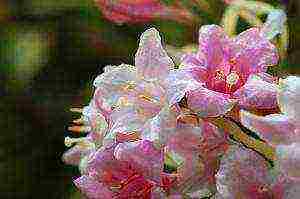
Weigela is an ornamental shrub from the Honeysuckle family. Various varieties of a flowering plant have taken root well in many regions of Russia.
…
Weigela is appreciated by gardeners and landscape designers for high decorative properties... Luxurious bushes with buds of incredible shades adorn thousands of gardens and summer cottages.
Flowers
Weigela ornamental shrub delights connoisseurs of true beauty. The flowers of this plant look great against the background of emerald lawns.
Variegated or bright green leaves accentuate the pleasing appearance of the weigela flowers. Tubular buds up to 5 cm in size are often collected in inflorescences. There are varieties with single flowers.
Breeders brought many hybrid varieties with buds of various shades... There is even an original Carnival variety: on one bush there are flowers of different tones.
The color of the petals ranges from pale whites and creams to rich pinks and purples. Some varieties have dark, crimson-red and brown buds.
The color of the buds may change during the flowering season. Weigela blooms twice a year:
- first time in May;
- the second period is in August - September.
Weigela in landscape design
The plant with spectacular flowers and vibrant leaves is ideal for creating original compositions in areas of different sizes.
Weigela ornamental shrub is used:
- For bright hedges. Maintain sufficient distance between bushes.
- As a tapeworm. Blooming weigela looks great against the background of an ideal lawn. It is advisable to plant single bushes in regions with a warm climate.
- To create alpine slides. Low-growing varieties are suitable.
- To decorate forest edges against the background of conifers or near tall trees.
- In mixborders in combination with dwarf bows, delicate irises and other spring flowers. Compact varieties are suitable for this purpose.
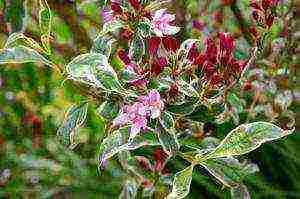 Weigela Nana Variegata
Weigela Nana Variegata
and Purpurea. Read about these types of this beautiful shrub here.
And this article tells about the view of Middendorf's weigela.
Varieties. Descriptions. Photo
 For many years, breeders have been breeding new varieties of the ornamental weigela shrub. Hybrid varieties are obtained by crossing several species of weigela.
For many years, breeders have been breeding new varieties of the ornamental weigela shrub. Hybrid varieties are obtained by crossing several species of weigela.
One of the main advantages of hybrids is their higher decorative properties. Varieties obtained as a result of breeding work are grown more often than pure species.
Many varieties of ornamental shrubs have long been known to gardeners. Weigela - suitable material for breeding new varieties.
For you - a description and colorful photos of popular varieties of the weigela plant and an acquaintance with interesting new products that are successfully used in landscape design and that will help decorate your garden or area around the house.
Early
The bush reaches two meters in height. Peculiarity - dense dense crown... In spring and summer, the leaves are bright green, by the fall the ocher color appears.
The stems are almost invisible. The bark on young shoots is colored in light brown and red shades.
The flowering period is 10-30 days.Delicate buds are light, purple-red.
Photo of early weigela.
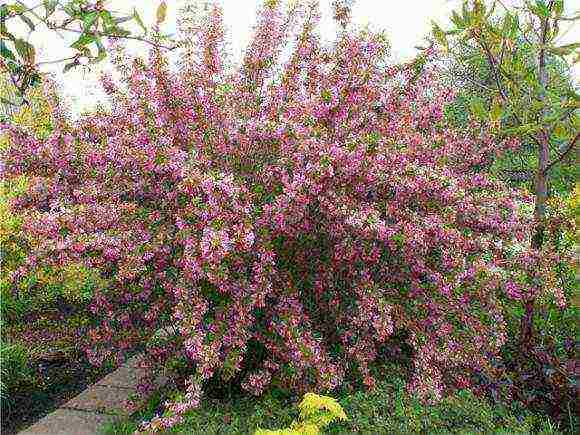
Red Prince
A popular variety native to America. Spherical bush with a diameter of 1.5 m. The crown is neat, the leaves are rich green.
The flowers are bright red, large, up to 5 cm long. This variety blooms in early June, the second time in early September.
Photo by Weigela Red Prince.
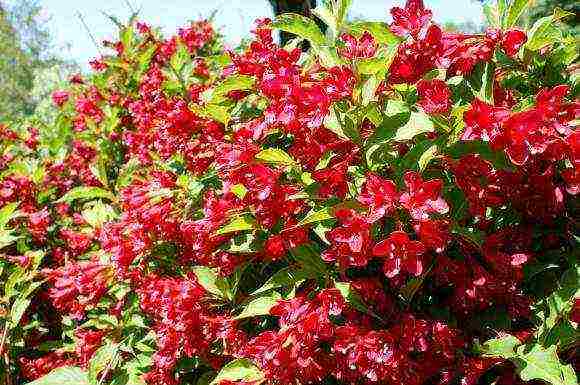
Coins
The variety of this weigela is distinguished by
unique color of leaf plates ... Variegated, brownish-pink, greenish leaves with pinkish-white edging immediately attract increased attention to the shrub.
One of the lowest dwarf varieties grows no more than 60–70 cm in height. The width of the bush does not exceed 80 cm.
Delicate pink flowers are collected in inflorescences of two or three buds. Veigela blooming Monet won the Grand Prix at a specialized exhibition in Holland in 2004.
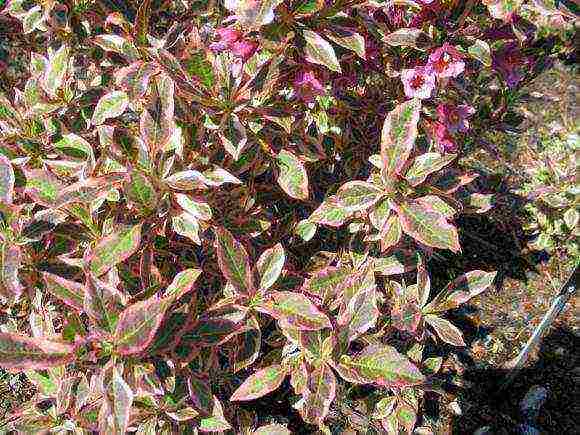
Weigela Minor Black
Low shrub - up to 60 cm.The variety is distinguished by the original, dark red, closer to black, shade of leaves.
Bell-shaped, pink-red buds bloom in late May - early June. The variety loves sunny areas.
Experts recommend cutting the buds after flowering. The variety is suitable for creating original color compositions.
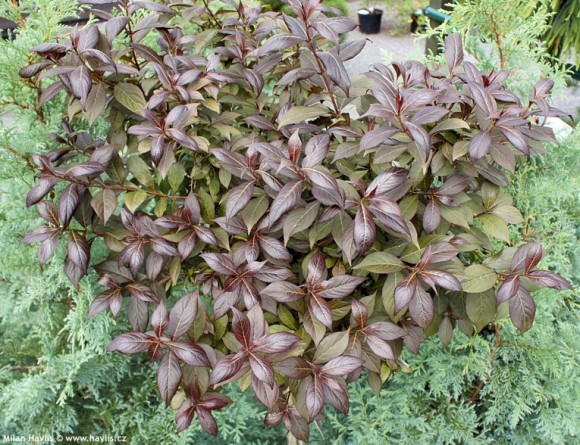
Magic Rainbow
This interesting variety of weigela is in demand by gardeners. Peculiarity: the changing color of the leaves during the seasons... At the end of spring, the border along the edges of the leaf plate is yellow-green, and in autumn it is already red-pink. No wonder the name of this variety in translation sounds like "Magic Rainbow"
Pink buds appear in June. The bush tolerates partial shade well, but it is advisable to plant the plant in lighted places. It tolerates winter well. Shelter with spruce branches is required.
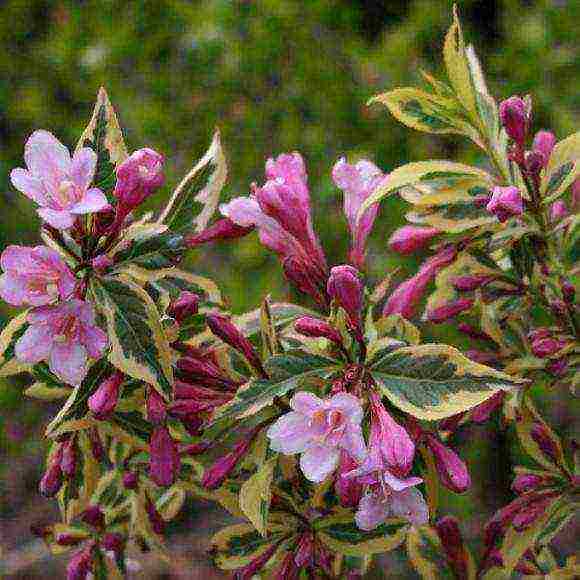
Eva Rathke
The pride of Polish breeders. The variety was bred in Gdansk in 1890. The bush is low - up to 1 m, but the crown diameter reaches 3 m!
The blooming weigela variety Eva Rathke has pointed elliptical leaves up to 10 cm long. long flowering period from June to August... Red carmine buds inside a lighter shade.
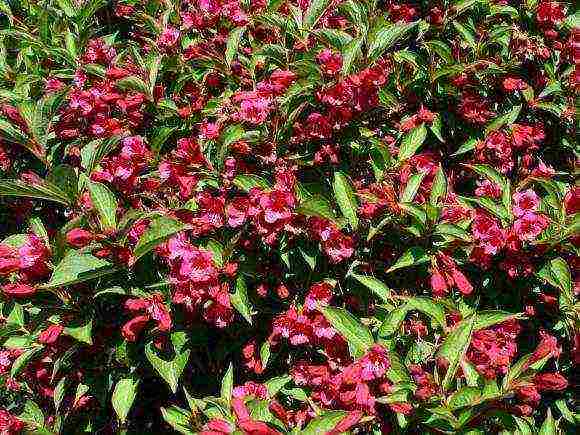
Victoria
Weigela's ornamental shrub pleases not only with beautiful flowers, but also with leaves of incredible shades. This characteristic is 100% close to the description of the interesting Victoria variety.
The leaf plates have serrated edges, a deep red-brown tone, and an elliptical shape. Flowers look beautiful against the background of the crown of an unusual color.
The shrub grows slowly. The maximum height is no more than 2 m, more often: one and a half meter.
In June, weigela Victoria is decorated with inflorescences.
Peculiarity: if there is a second flowering in September (which does not happen every year), then only single buds will appear.

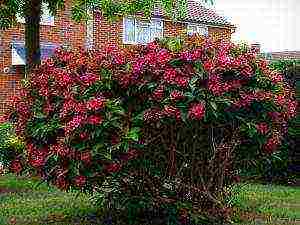 Pruning weigela
Pruning weigela
... Planting and leaving. You will read about this in our next article.
And here is an article about the blooming weigela Alexander.
Carnival
The name of the variety accurately reflects the appearance of this ornamental plant. At the same time, the bush is decorated with three types of buds. Bright shades of pink and red flowers are mixed with the delicate whiteness of white buds.
Weigela variety Carnival - fast-growing, the height of the bush reaches one and a half meters. The buds reach 4 cm. The inflorescences are located at the tops of short shoots or in the leaf axils.
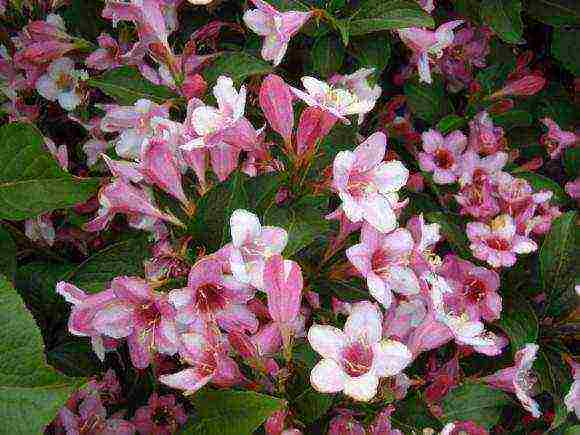
Rosea
A popular variety, a hybrid of Korean and flowering weigela. The bush with a spreading crown is low - up to one and a half meters.
Peculiarity - large pale pink flowers... Winter-hardy variety, enough foliage to protect from cold weather.
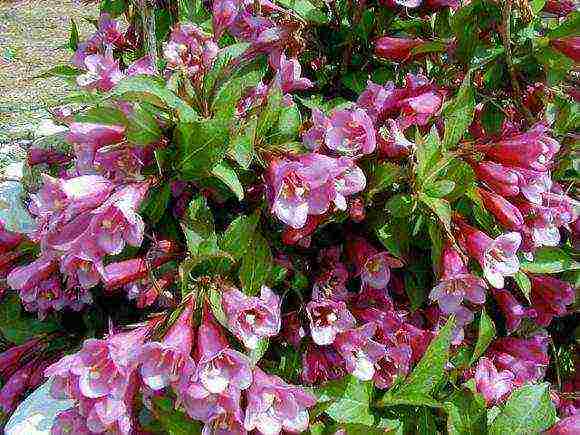
Variegated
A beautifully flowering variety of weigela. Leaves green with white edging... Flowers up to 4 cm in size are collected in groups or single. The buds are red-pink, the edges of the petals are lighter in color.
The flowering period is from May to June. Sometimes the second time the buds appear in early September.
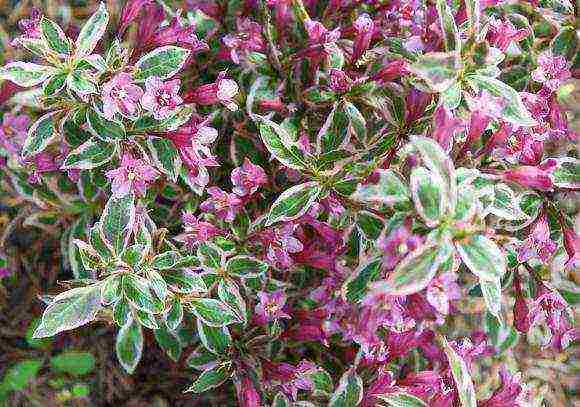
Brighella
A beautiful compact bush with a height of 1.5 to 2 m grows well even in arid areas. Watering, of course, is mandatory, but the Brighella variety withstands the lack of the required amount of moisture better than others.
Peculiarity: lateral branches of original shape, interesting shade of bell-shaped buds. The flowers are lighter inside than outside. The ornamental weigela Brigell shrub with deep red-pink buds will add color to even the most boring area.

Candida
The new variety quickly gained popularity among landscape designers and hobby gardeners. Luxurious shrub up to 2 m high covered snow white bell-shaped flowers.
The buds are collected from the inflorescence in several pieces. The shade will not fade even during the wilting period.
The leaves are light green, the crown is quite dense.
Weigela Candida prefers warm places without strong gusts of wind.
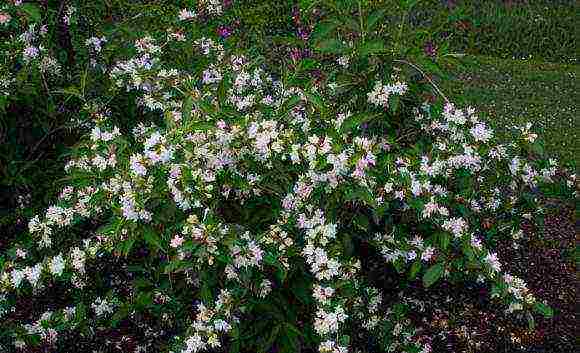
Naomi Campbell
An original variety with bronze, sometimes deep reddish-brown foliage. Glossy sheet plates - the darkest among all varieties of weigels.
The flowering period is June - July, the buds are dark pink. The bush is highly decorative. The buds stand out clearly against the background of the bronze-red foliage.
Slow-growing shrub grows only 80 cm. The variety requires shelter for the winter.
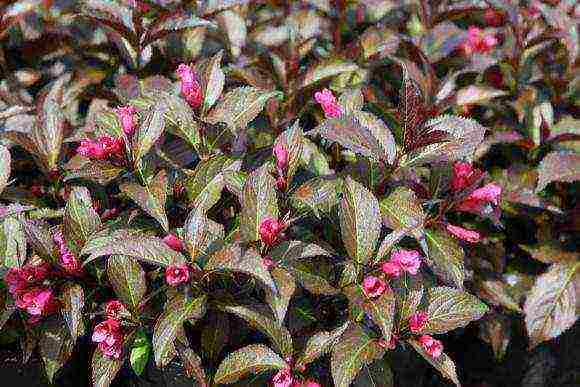
Lucifer
An unusual, memorable variety. The leaves are juicy, bright green. Weigela Lucifer variety grows quickly, blooms profusely... Shrub height - up to 2.5 m.
Bell-shaped buds, dark red, bright. Do not change color during the wilting period. A second wave of flowering can be achieved in time by the summer pruning of weigela. In August - September, the bush can be covered with flowers again.
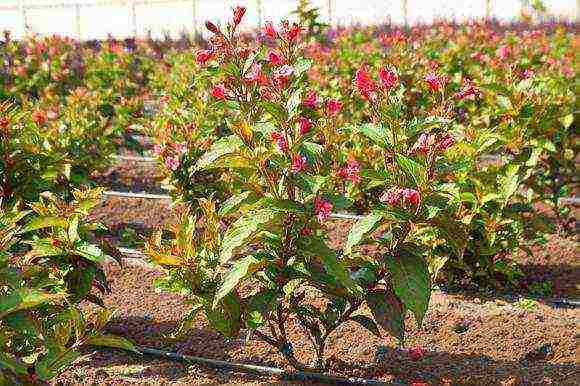
Sunny Princesses
The original look of the shrub is explained a combination of pleasant pink flowers and green leaves with yellow edging... The height of the bush is up to one and a half meters, the width is the same.
It tolerates both the sun and partial shade. We need fertile soil and timely loosening. The variety is afraid of severe drought. Looks great in single and group plantings.
Photo of a bush of weigela Sunny Princesses with pink flowers.
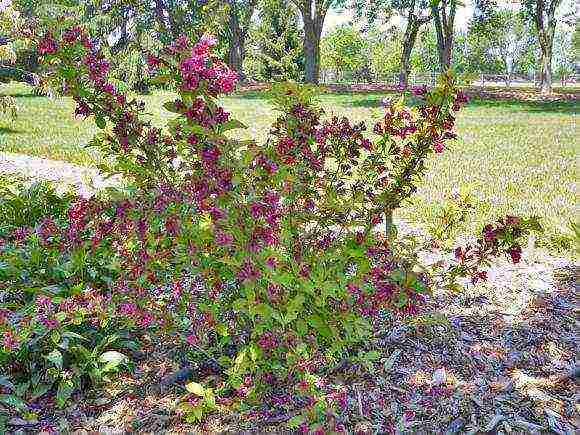
All Summe ed
The new variety appeared on the market in 2013 and immediately got into the TOP-10 varieties of weigela. Ornamental shrub prized for continuous flowering.
In May - June, the bush is strewn with tubular flowers of a bright red hue. Re-flowering begins immediately.
The height of the shrub with bright green leaves is up to 1 m, the width is up to 1.8 m. For the All Samme red variety, buds are characteristic both on young and old shoots.
You need to prune every two to three years. Experts advise to shorten the shoots immediately after the first flowering.
This variety is used in pots and containers. The cultivar has received an award for its long flowering period.
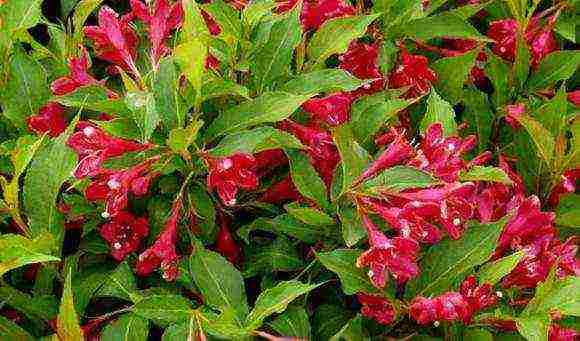
Weigela - ornamental shrub, in demand in landscape design... Create a wonderful corner on your site, in which a delightful weigela will play a central role.
Choose interesting hybrid varieties. With proper care, a flowering shrub will delight the eye for a long time.
Weigela is directly related to the honeysuckle family. This plant is represented by shrubs. The plant was named after the German Christian Ehrenfried von Weigel, who was a botanist, chemist and pharmacologist. Under natural conditions, this plant is found in the eastern and southeastern parts of Asia, in the Far East and on the island of Java. The genus unites 15 species represented by deciduous shrubs. Only 7 species and 10 varieties are cultivated, which are highly decorative. Weigela not only has a very effective appearance, but is relatively unpretentious, and it can be easily propagated.
Weigela features
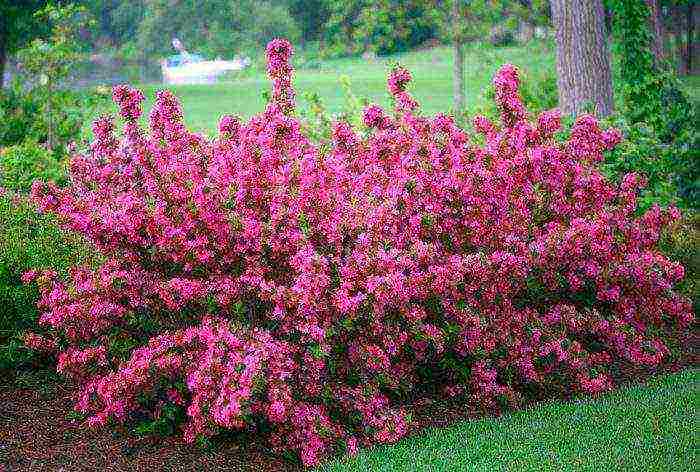
The plant loves moisture and grows quite well in the shade. This upright shrub does not form stolons. Opposite petiolate leaf plates do not have stipules, they are serrate-serrate or serrate. The length of the bell-shaped or funnel-shaped flowers is about 5 centimeters. Flowers are solitary or are part of loose inflorescences.They can be painted in cream, carmine red, pink, yellow and other colors, while often during flowering, the color changes from a paler shade to a brighter one. The fruits are represented by a bivalve box with small seeds inside.
Landing weigela
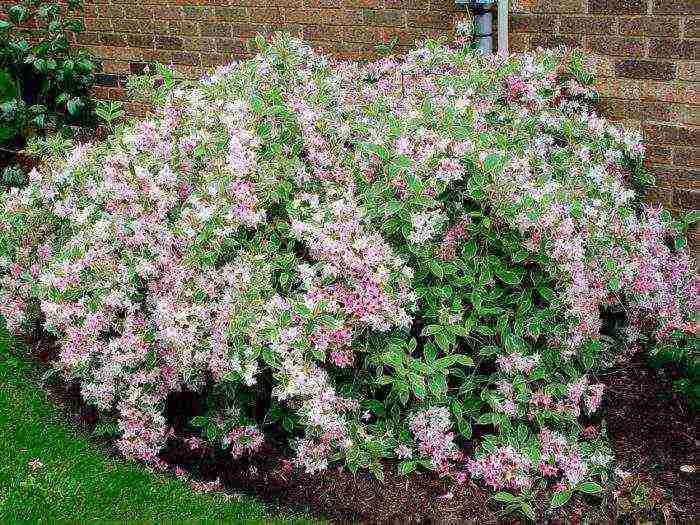
What time to plant
The best time to disembark a weigela is spring. In this case, it is necessary to have time to plant the plant before the buds swell, but the earth should already warm up, in which case it will take very well. The shrub planted in the fall dies during the first wintering.
It is best to choose a place for planting on a hill, while it must be protected from drafts and north winds, which can cause shedding of flowers and buds. Better to plant the weigela on the south side of the building. In good light, the flowers are very bright and the flowering is plentiful. For planting, you need loose soil with a lot of humus. Loamy or clayey soil, neutral or slightly alkaline, is suitable. It should be borne in mind that weigela middendorff (Weigela middendorffiana) can be planted in peaty, slightly acidic soil. The planted seedling must be at least 3 years old.
How to plant
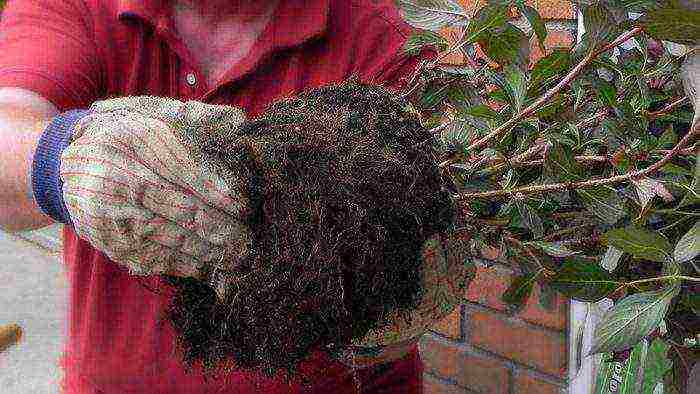
The depth of the landing pit is from 30 to 40 centimeters. If the soil is infertile, then the pit should be made deeper, because on the drainage layer (height 15 centimeters), which can be made from gravel, fragments of brick or sand, a layer of nutrient-rich soil should be laid (1.5 buckets of compost plus 100 grams of nitrophosphate ). Fertilizer should be thoroughly mixed with compost. In order for the seedling to begin better, its roots can be treated with a substance that stimulates root growth (Viva + or Radifarm).
If the weigela seedling is of a medium-sized variety (no higher than 100 centimeters), then a distance of at least 80 centimeters should be left between the bushes, the gaps between the bushes of high varieties (height up to 250 centimeters) should be from 150 to 200 centimeters. During planting, do not forget to straighten the roots of the seedling, the soil will need to be gradually poured into the hole and tamped in order to exclude the possibility of voids formation. It is possible to deepen the root collar by only 10–20 mm, but it is desirable that when the soil settles after watering, it is at the same level with the ground. The planted plant must be well watered, and the surface of the soil must be sprinkled with a layer of mulch.
Weigela care
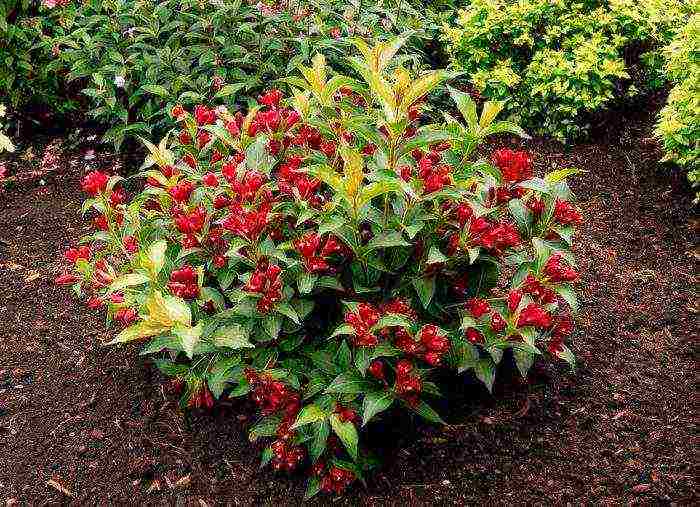
Spring
Growing such a shrub is easy, and even a beginner can handle it. It is necessary to water the weigela only during the dry period, while a large amount of water is used (if the near-trunk circle is mulched, then watering will be more rare). You also need to do timely weeding and loosening of the soil, which is performed very carefully with only half the bayonet of the shovel, otherwise the root system can be damaged. You also need to feed the plant in a timely manner, while if you added nitrophosphate and compost during planting into the hole, then the bush will not need feeding for 2 years. In the third year, at the beginning of spring, weigela needs to be fed, for this, a complete mineral fertilizer is applied to the soil, for example: diammofoska, ammofoska, Kemiru-lux or other fertilizers, which include potassium, phosphorus and nitrogen. In the last days of spring or the first - summer, during budding, it is necessary to make a second top dressing, while you need to take phosphorus and potassium fertilizers (potassium sulfate, superphosphate, etc.). Thanks to this, the plant will bloom for a long time and abundantly, and the branches will also strengthen, which is good for wintering. The third time the bush is fed during digging in the fall, while taking wood ash (for 1 m2 you will need 200 g of top dressing). You can use Kemira-autumn fertilizer for this purpose, while the dosage should be seen in the instructions.
Bloom
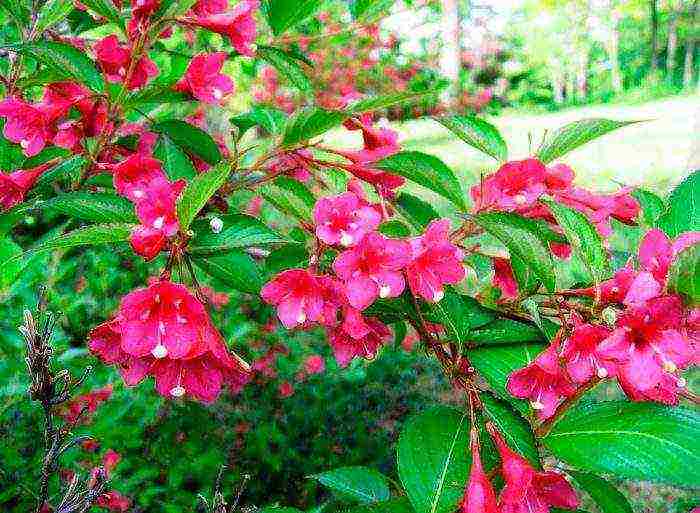
This shrub blooms 2 times per season. The first lush flowering is observed from the second half of May to mid-June, while flowers appear on the shoots of the last year.The second time the shrub blooms in August and blooms until September. At the same time, flowering is less abundant than in spring, and flowers grow on the shoots of the current year. During flowering, the plant looks very impressive.
Reproduction of weigela
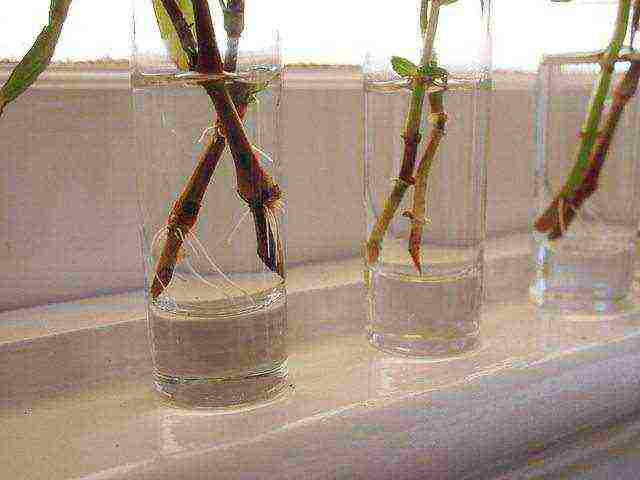
The plant can be propagated quite simply by seed. It should be borne in mind that their germination is maintained only for 1-2 years, therefore, experienced gardeners do not recommend sowing seeds in boxes or greenhouses. The easiest way to propagate weigela is self-seeding. In spring, when shoots appear from the seeds that have fallen into the ground, it will be necessary to select the strongest, and remove the rest. They will need to grow, which lasts 2 years, only after that they can be transplanted to a permanent place. But it must be borne in mind that with this method of reproduction, varietal traits are not always preserved. In this regard, gardeners with considerable experience recommend reproduction in a vegetative way, namely: by layering, young shoots from the stump, as well as summer green or last year's semi-lignified cuttings. For cutting cuttings, the length of which should be from 10 to 15 centimeters, you should choose this year's green shoots (cut in the last days of June) or last year's semi-lignified shoots (cutting is carried out before sap flow begins), or you can cut the root shoots. The leaf plates located at the bottom of the cuttings must be cut off, while the upper ones must be shortened by ½ part. The slice from the bottom must be dipped into Kornevin. The cuttings are planted in soil consisting of peat and sand, while its surface should be covered with a layer of sand equal to 4 centimeters. The shank must be deepened by only 10 mm, no more. Each plant should be covered with a cut plastic bottle or glass jar. The shelter needs to be cleaned every day for a while for airing and watering. The emerging young shoots need to be pinched in order for the plant to be more bushy.
Layers should be propagated in a different way. Choose the sturdiest bottom shoot and bend it to the ground. At the point of contact with the ground on the shoot, you need to cut the bark slightly. Then it is fixed on the surface of the soil and sprinkled with soil. Already next spring, the cuttings will take root completely. Cuttings and cuttings can be transplanted to a permanent place only at the age of three.
How to trim properly
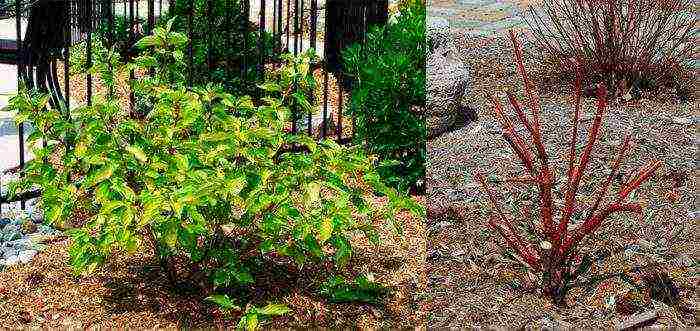
Weigele, like all shrubs, needs pruning. Young bushes need pruning only for sanitary purposes. To do this, at the beginning of spring, you need to cut off those branches that thicken the plant, as well as sick, injured and damaged by frost. Older plants need formative pruning, which should be done after the weigela has bloomed for the first time (in the middle of summer), while young shoots should not yet grow. It is worth remembering that during the re-flowering, flowers appear on the shoots of the current year. In this regard, if you did not carry out the formative pruning in time, and new branches began to grow, then it is recommended to postpone it until next year. Adult shrubs need rejuvenating pruning, carried out once every 3 years, while all branches that are more than 3 years old need to be cut off, and those that remain should be cut off by 1/3. In some cases, it may be necessary to prune all branches; after this pruning, the weigela recovers very well.
Diseases and pests

Often leaf-eating caterpillars and aphids settle on this shrub. During a long period of heat and drought, thrips or spider mites can settle on the plant. However, by the beginning of the drought period, the first flowering of the weigela is already ending. In order to destroy these harmful insects, it is recommended to use pesticides such as nitrafen, rogor or celtan, but it should be borne in mind that they are harmful to the environment.There are more harmless means for controlling harmful insects - these are insecticidal infusions made from plants such as hot pepper, wormwood or garlic. If the planted seedlings turn yellow and begin to fade, then this is most likely due to the fact that a bear has started up in the root system or the larvae of the May beetle have settled. They could get into the ground along with compost or humus during planting. To destroy them, it is necessary to water the bush with a solution of actara or karbofos.
Weigela most often suffers from gray rot, rust, and spotting. In order to get rid of a fungal or bacterial disease, you need to treat the bush with Bordeaux liquid (copper sulfate mixed with milk of lime). For preventive purposes, you can treat the plant during the appearance of leaves with Topsin's solution (3%).
Weigela after flowering
Seed collection
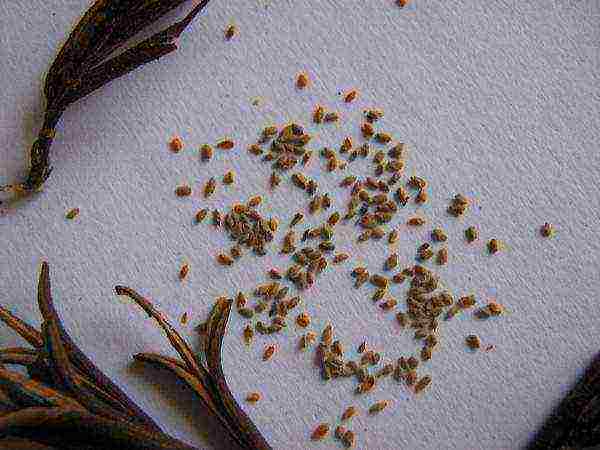
The seeds ripen in September and are harvested in October after the capsules begin to crack. In order for the seeds not to spill out on the surface of the soil, it is necessary to wrap several pieces of testes with gauze in September and fix it on the branch. After the box is ripe, you need to carefully cut it and bring it into the room. There you can remove the gauze and sprinkle the seeds onto a newspaper. After the seeds are dry, they need to be poured into a paper bag, on which do not forget to mark the name of the plant, its variety and the date when the seeds were collected. They must be placed in a dark, dry place where they will be stored until spring. It should be remembered that seeds retain good germination only for 1–2 years, while shrubs grown from seeds may not retain the varietal characteristics of the parent plant.
Wintering
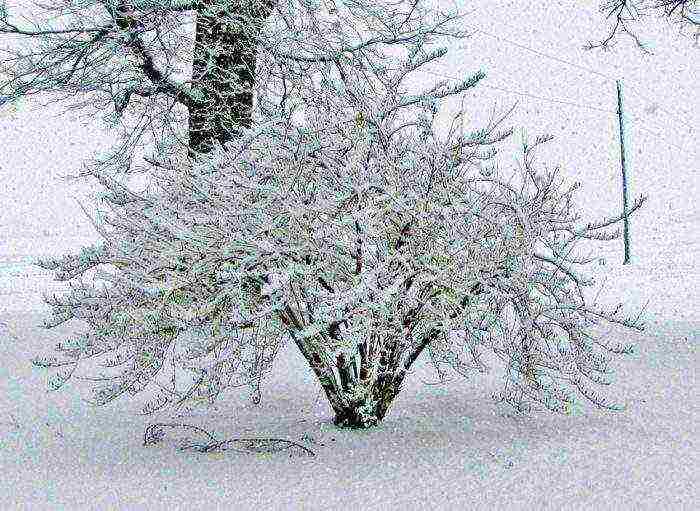
After the end of leaf fall (in the last days of October or the first days - November), you need to cover the near-trunk circle of the shrub with a layer of soil, while the height of the mound should be from 15 to 20 centimeters. It is recommended to bend the branches to the soil surface and fix them. From above, the bush is covered with spunbond or roofing felt, while the shelter is pressed so that it is not blown away by the wind. You can not bend the branches, but tie them with twine or rope, pulling them well. Fence the plant with a plastic or metal net. It is necessary to pour dry fallen leaves inside the resulting structure. On top, the structure must be insulated with a covering dense material.
Main types and varieties with photos and names
For gardeners of middle latitudes, weigela varieties are most suitable, which are resistant to frost. These include the species and varieties described below.
Early weigela, or weigela pleasant (Weigela praecox)
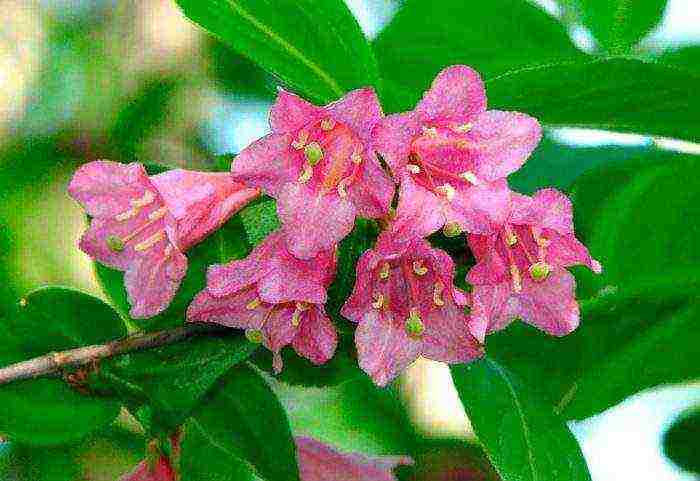
In natural conditions, it grows in the Far East. The bush reaches a height of about 200 centimeters. There is pubescence on the foliage surface. The crown is spherical. The outer part of the flowers is deep pink. Inflorescences consist of 2 or 3 flowers, while they grow on the lateral shoots of this year. It happens that the throat of the flower has a white-yellow color, in the buds the flowers are painted purple. Flowering begins in the last days of May and lasts from 10 to 30 days. The variegated variety of weigela variegated is of the greatest interest. On the surface of the green leaf plates there are specks of yellow color, in the summer they acquire a cream color.
Weigela flowering, or weigela florida (Weigela florida)
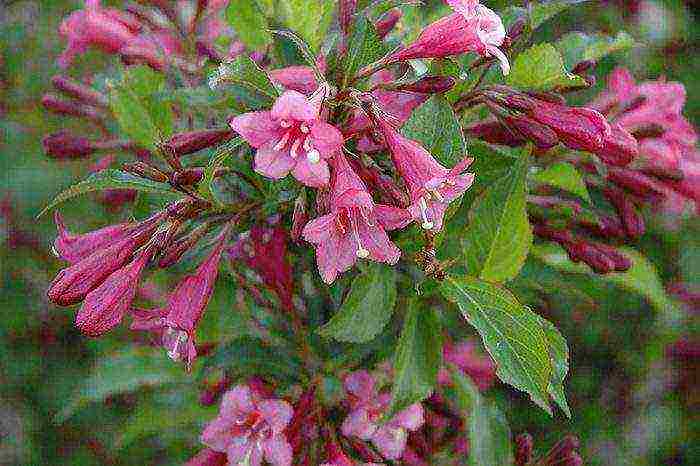
The bush reaches a height of 300 centimeters. There are 2 rows of hairs on the surface of the shoots. Short-petiolate serrated leaf plates on the front side have pubescence located along the central vein, while on the seamy surface all veins have pubescence. The inflorescences consist of 3 or 4 flowers, painted in a deep pink color, which open in the last days of May. Flowering lasts approximately 20 days.
Popular forms:

- Weigela purple, or weigela red (Weigela Purpurea). The height of the bush is about 150 centimeters, there is a lush crown. The leaf plates are brownish-red in color, the bright pink flowers have a yellow throat. Bloom is observed in June and July. Nana Purpurea is very similar to weigela purpurea, but the shrub is smaller.
- Alba. It is a dwarf form. White flowers turn pink during wilting.
- Variegata... This form is very beautiful and the most frost-resistant. Has small leaves. The racemose inflorescences are composed of deep pink flowers.
- Weigela pink (Weigela florida Bunge)... The outer surface of the flowers is carmine pink, while the inner surface is almost white.
- Weigela florida Victoria... The height of the bush is about 100 centimeters. The foliage is brownish red, and the flowers are purple in color.
Weigela hybrid (Weigela hybrida)
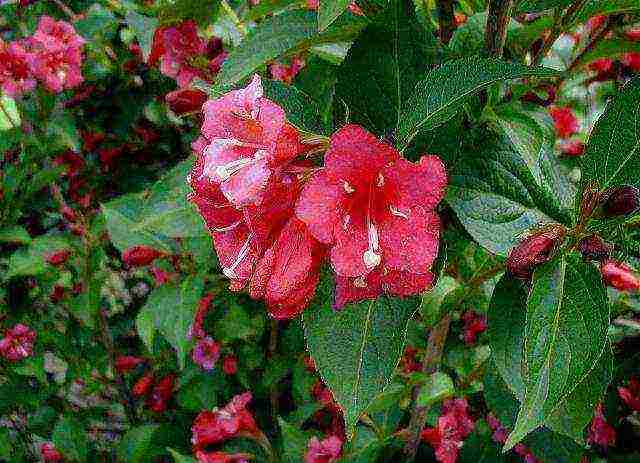
Has a spreading crown, lush flowering. The height of the bush is about 150 centimeters. Fragrant flowers have a funnel-shaped tubular shape, they can be part of loose inflorescences or be single. Depending on the variety, the color of the flowers can be pink, lilac, purple, white, violet-red.
Popular varieties:
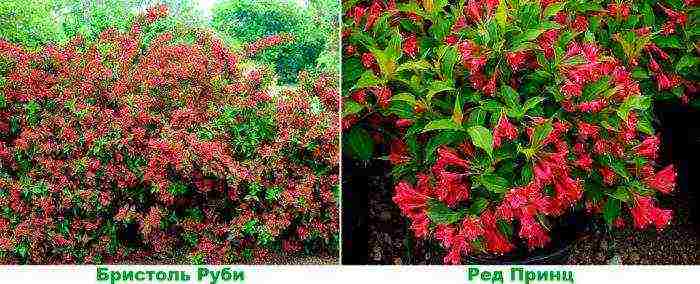
- Bristol Ruby... The variety appeared in 1941 in the United States. The bush can reach a height of 250-300 centimeters, while the diameter of its crown is 350 centimeters. The leaves are deep green in color. The pink flowers have ruby-red edges, sometimes their center is colored orange. This fast growing plant begins to bloom in the last days of June.
- Red Prince... The variety was bred in the USA. A compact bush in height can reach 150 centimeters. Has a spreading crown, drooping branches. Bright red flowers look very beautiful against the background of green leaves.
Weigela middendorff (Weigela middendorffiana)
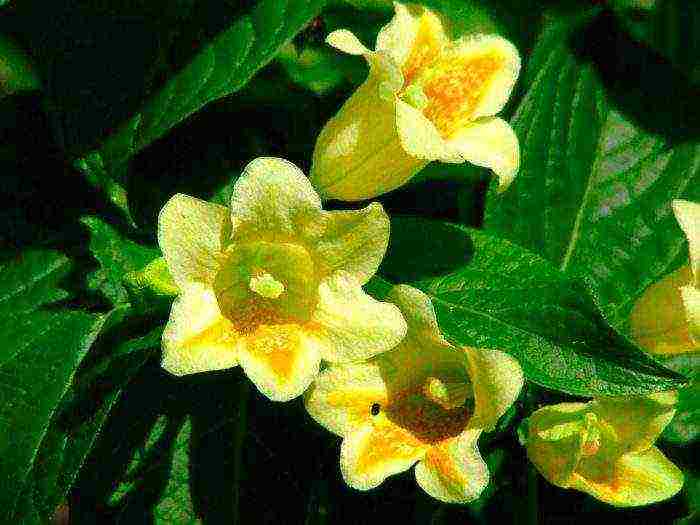
The height of the bush can vary from 100 to 150 centimeters. Ascending shoots. Large (from 3 to 4 centimeters) yellow flowers have orange spots in the throat. They are part of low-flowered inflorescences of 2-6 pieces or are single. Flowering is observed twice per season.
Also, quite often gardeners grow abundantly flowering weigela, pleasant weigela, early weigela, Japanese weigela, garden weigela, Maximovich weigela and Korean weigela.
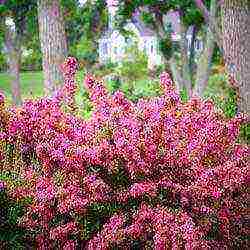 It is not difficult to equip your site in an interesting way - it is enough to plant a weigela. When choosing the variety you like, you should be guided not only by the photo, but also by the detailed description. After all, not all species are frost-resistant, and this is one of the main characteristics necessary for successful cultivation. It is also worth choosing the most ideal conditions so that this, in principle, undemanding shrub, manifests itself in full glory.
It is not difficult to equip your site in an interesting way - it is enough to plant a weigela. When choosing the variety you like, you should be guided not only by the photo, but also by the detailed description. After all, not all species are frost-resistant, and this is one of the main characteristics necessary for successful cultivation. It is also worth choosing the most ideal conditions so that this, in principle, undemanding shrub, manifests itself in full glory.
Variety of choices
The genus was discovered by Professor K. Weigel. Nowadays, 15 species of perennial, beautifully growing shrub with green leaf fall have become famous. It is able to bloom 2 times a year, delighting with amazing inflorescences around May and September.
The original buds (2-5 cm) range in color from pale cream to almost white to dark purple. Breeders have developed hybrid varieties capable of having buds of different tones of pink on one bush ("Carnival"). We also worked on the height - now there are specimens from dwarf to high (over 3 meters). When choosing a vending variety, and there are more than 100 of them, they pay attention to its resistance to frost.
Varieties
The most popular variety among the flowering Weigela is "Variegata". A rather stunted view (90-150 cm), simply strewn with bright pink tubular-bell-shaped small inflorescences, will delight you with interesting foliage.
But gardeners and landscape designers give preference to hybrid varieties.

Middendorf
- Middendorf. A variety of medium height blooms for up to a month, delighting with light yellow bells in inflorescences of several pieces.
- Bristol Ruby. Large-scale, well-growing representative, up to 3 m high.
- Gustav Mallet.Tall hybrid with unusually large flowers of a special shade of carmine pink.
- Weigela Early with dark pink flowers against a background of dark green leaves. Especially good for creating hedges.
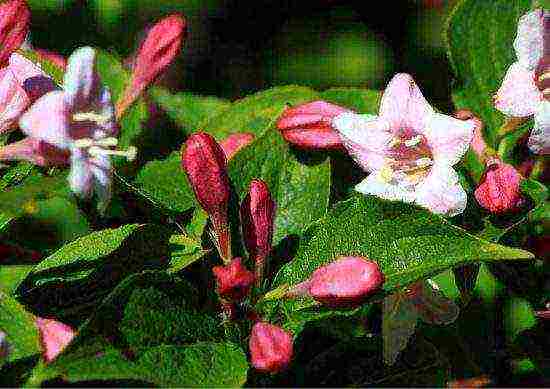
Gustav Mallet
Among these bushes it is easy to find your own variety, or even several.
Perfect fit
Weigela is a fairly shade tolerant plant, only some varieties require enough sun, otherwise they will bloom poorly. It can be planted singly, but it looks lovely and bright in a single landscape design, just follow some recommendations:
- Hedge - a sufficient distance between specimens (from 0.5 m).
- Rock garden - in combination with stones, undersized spreading shrubs are especially aesthetic.
- Solitaire is a free-standing specimen in the center of a small meadow with lawn grass.
- In the company of conifers, junipers, bushes of any height can be planted, and additional protection from the wind will save delicate flowers from flying around for a longer period.
- Mixborders - use undersized varieties, especially beautifully shading ferns, ornamental grasses and grasses, sedge. Flowers of early varieties should not compete when blooming at the same time.
Advice. According to some gardeners, weigela is capable of attracting bees and wasps - this is worth paying attention to if you decide to plant a shrub near your home.
Pruning rules
Depending on the variety, a different degree of pruning may be required, which serves not only to add decorative effect, but also thickens the shoots, making them strong and hardy. Produced every 2 years after the end of flowering, and the shoots:
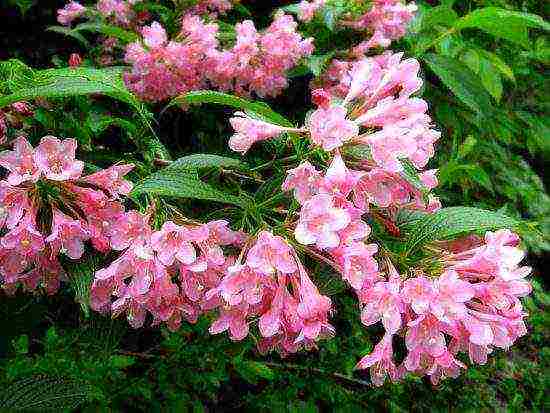
Weigela tolerates pruning well
- old, defective - completely cut off;
- faded adults are shortened to a developed kidney;
- young - cut to half, leaving the strongest;
- full stump trimming is not performed.
In the spring, only corrective pruning is carried out, otherwise the shrub will not gain strength for growth.
Features of agricultural technology
The soil is improved by adding sand and humus. Weigela will not appreciate excessive waterlogging: they must use drainage when planting. It is better to carry it out in the spring:
- Prepare a pit 50 * 50 cm with a drainage layer of 15-20 cm, sprinkled with earth.
- Treat the roots with biostimulants.
- Place it at such a distance that the place where the roots pass into the stem (neck) is at the level of the soil after compaction of the earth.
- Compact the soil and water.
- It is advisable to create a layer of mulch on the surface, the decorative material looks especially well-groomed.
Advice. The shrub should be watered especially abundantly only at the beginning of spring.
Fertilization should not be neglected, especially for young plants, but only after they have taken root. Complex mineral fertilizers are used. In the fall, it is better to use potassium-phosphorus.
Reproduction is carried out by cuttings, because the seed method is not reliable in terms of obtaining a shrub with pronounced varietal properties. The stalk is cut in June after the end of the first flowering. After being treated with a stimulant (phyton or other rooting fungicide), it is placed in a flowerpot. After 1.5 months, a full-fledged root system will form. But a young shoot will bloom after planting in the ground only after 2-3 years.
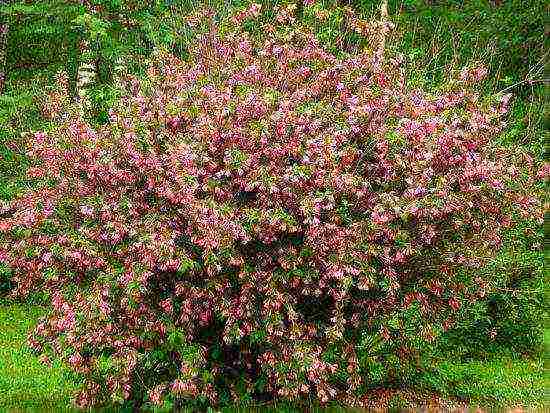
The plant needs shelter for the winter
Preparing for winter
After weigela has thrown off the leaves, it is time to save her from the frost. Even frost-resistant varieties can die when the winter is not very snowy. Therefore, the process is mandatory:
- Bushes bind, some, not particularly hard, bend to the ground.
- Wrap with non-woven covering materials (Spandbod, Lutrasil and other analogues).
- Cover with spruce branches on top.
Another danger, in addition to the winter cold, lies in wait for the weigela in the summer. Aphids and caterpillars are capable of doing harm, and in order not to fight them during the season, it is worth carrying out preventive spraying in the spring.
And then even amateurs in ornamental gardening will have no difficulty in turning their site into a spectacular example of landscape design. It is weigela that will delight you with both foliage and flowering, as well as unpretentiousness.
Types of weigela: video
Weigela is an exquisite garden plant that can beautify any garden with just one look. The shrub is incredibly beautiful during the flowering period, when bright brushes of inflorescences descend along its hanging branches. Thuja care instructions are here: 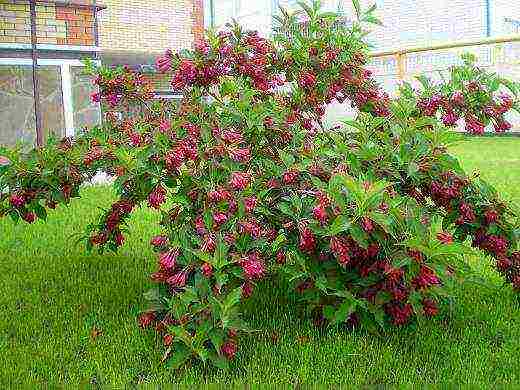
Weigela blooming in the garden
Description and characteristics of weigela
German professor of botany and chemistry K.E. von Weigel was the first to discover this type of flowers, after which it was named. The whole genus of these flowers is presented in 15 species, and you can find various varieties of weigel in Far and East Asia. This is a perennial lush shrub of a deciduous type that has the ability to bloom again, and it is especially valued for the beauty of its inflorescences, a tubular-bell-shaped type, but sometimes weigel also has single flowers. The leaves of the shrub are also very beautiful - with a white edging of green color.
weigela winter hardiness.
Weigela is a lover of warm climates and mild heat. But the cold winter is not well tolerated by these flowers. Only some winter-hardy varieties are able to survive wintering. But if the frost nevertheless damaged the plant, it can recover in the same year and even please with flowering. In winter, it is better to cover shrubs in severe frosts. Read in detail how to plant thuja western Danica and how much the seeds cost.
The height of weigel shrubs depends on the type of plant, but most often the bush has a height of 1.5 m, only some species reach 3 m in height.
Types and varieties of weigela

Weigela blooming
The homeland of this weigela is North China, also Japan. The plant reaches a height of 3 m, prefers light partial shade. Then its motley leaves turn green. Flowering begins in May and lasts until the end of June. On the lateral shoots, abundant pods of inflorescences up to 5 cm appear in size, measure pale or bright pink. This weigel variety loves slightly acidic, moderately moist soil and does not tolerate stagnant water. Therefore, with careful watering, good lighting and not a strong large density of planting of Weigela shrubs, the blooming reaches the maximum beauty of flowering lasting 20 days.
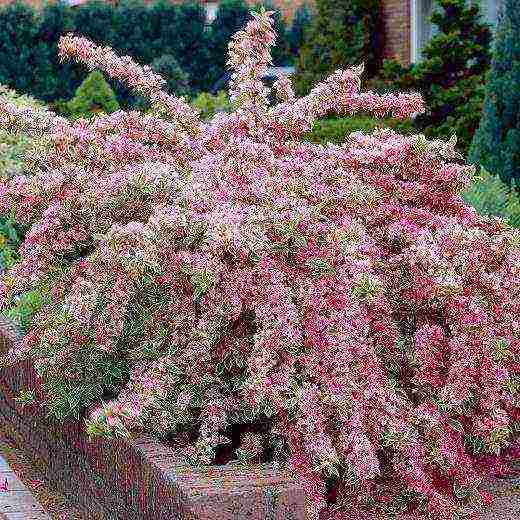
Weigela variegata or weigela nana variegata
A variety of shrubs from the genus Honeysuckle. It takes root well in the Western European climate. Plants reach 70-90 cm in height. They do not like windy places, but they tolerate winter well. Also, this variety is distinguished by its resistance to substrate compaction. The bells are 3-4 cm in size and have a bright pink color. This weigela withstands poorly lit areas, slightly alkaline and acidic soils. But in the spring you need to cut off the shoots so that new ones with bright green leaves grow. The main thing is not to do this during the flowering period - from mid-May to the first half of June. These shrubs look great in landscape compositions and as a single plant. Some create a flowering hedge out of these bushes.
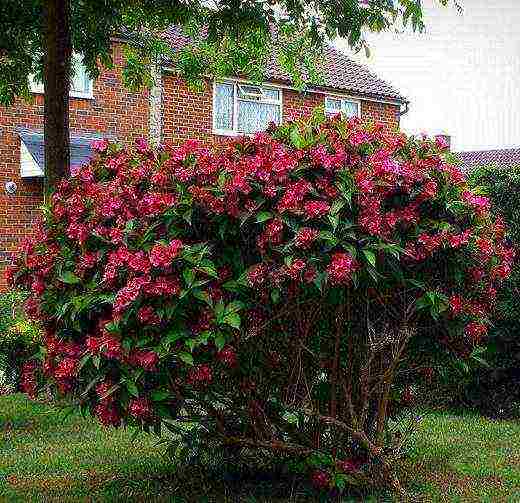
Weigela hybrid
These weigel have such a name from the fact that they contain species - Korean, blooming, abundantly blooming, garden. This type is quite common; landscape designers love to use it when creating their compositions. The inflorescences of these oars are loose, most often dark pink. The shrub has succulent green leaves. Care does not differ from the usual care of Weigel bushes - cover for the winter, avoid excessive watering, they like the optimal ratio of light and partial shade. It blooms from May to July, again in early autumn. It is well accepted from early spring in loose soil with a small addition of fertilizer. Mandatory for its roots is a drainage procedure.
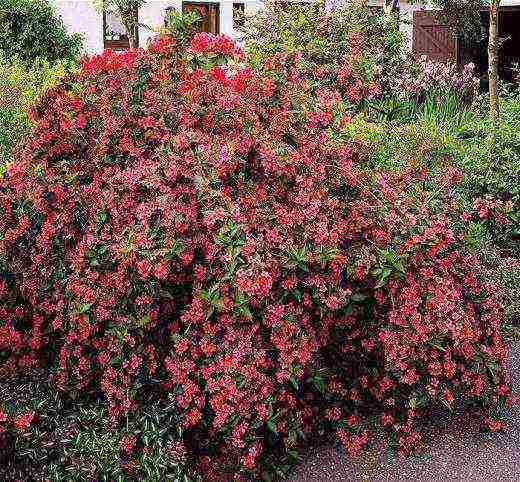
Weigela Bristol Ruby
The flowers of the plant are lilac-pink and ruby-colored. A frost-resistant variety, the size of the crown in diameter is 2 m, and the height of the shrub is 3 m.Grows especially well on moist, fertilized soils.
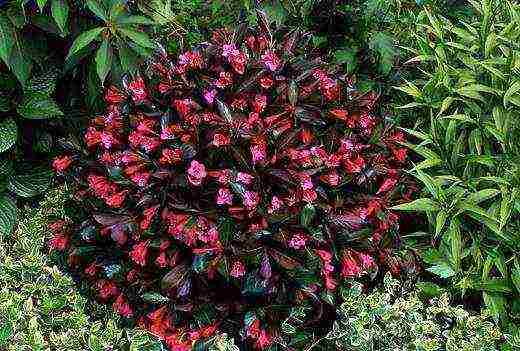
Weigela Alexandra
Slow growing weigel variety. No more than 10 cm of growth per year. Differs from others in color of leaves - to black almost from dark green. Blossoming red, deep dark pink. Abundant watering does not like, average illumination is acceptable. It tolerates winter relatively well, but requires shelter from winds and frosts. How dshfobdfnm thru western brabant read on this page.
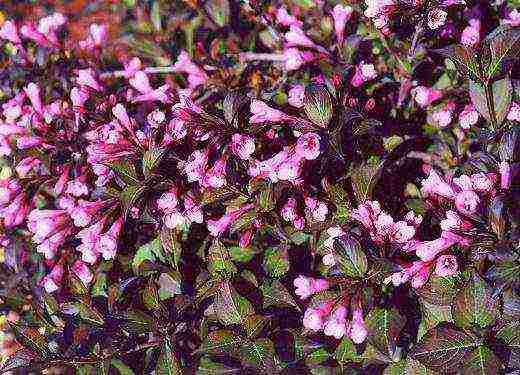
Weigela Nana Purpurea
It has dark red, slightly brown leaves. Adds well to growth per year. Requires good sunny locations. Compact shrub - only up to 1 m in height. Abundant flowering can be observed in May-June, 4 flowers per inflorescence.
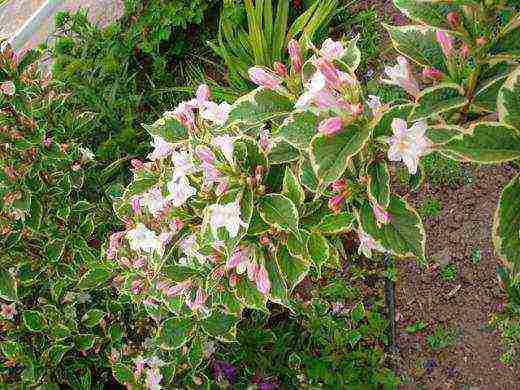
Weigela variegated
This weigela is distinguished from the rest by its leaves, which have a variegated color. Also, this variety has very beautiful flowers - tubular, with wide bells of a wide variety of colors - from pale pink to rich double color.
Weigels are quite thermophilic plants. Also, grateful flowering from weigel can be achieved only in the case of proper planting, cuttings, watering and fertilization. Among other types of weigel, you can find such popular types:
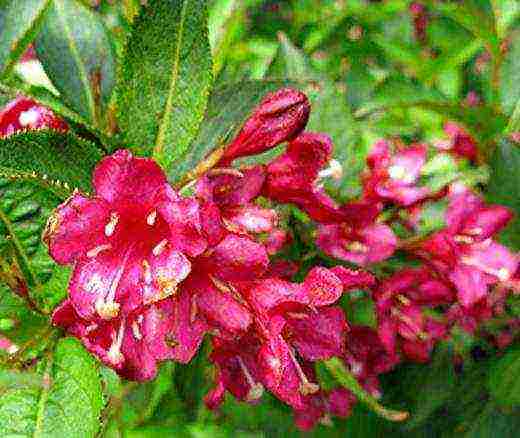
weigela eva ratke
has ruby colors with an orange center;
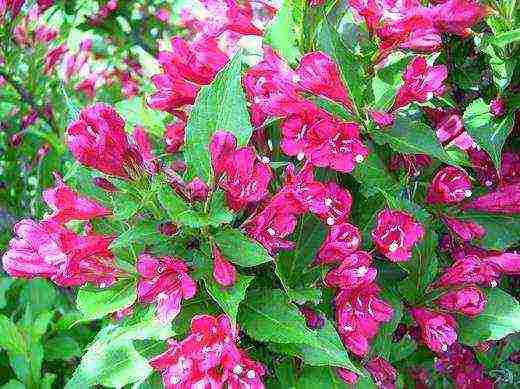
Weigela Red Prince
variety with large variegated pinkish flowers;
-
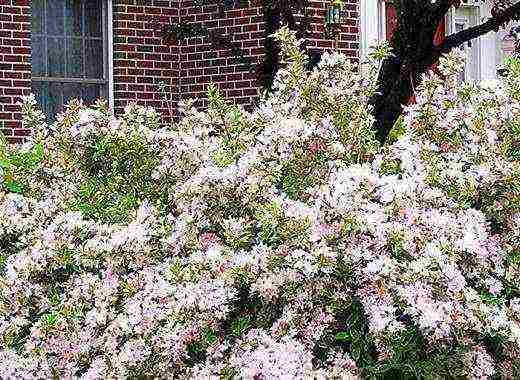
Weigela early
inflorescences have a color from lilac to deep pink;
-
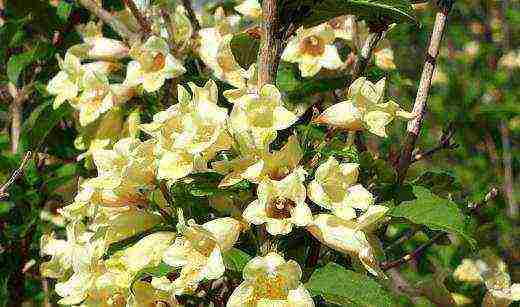
Weigel Middendorf
pale yellow, sometimes white flowers adorn the entire shrub;
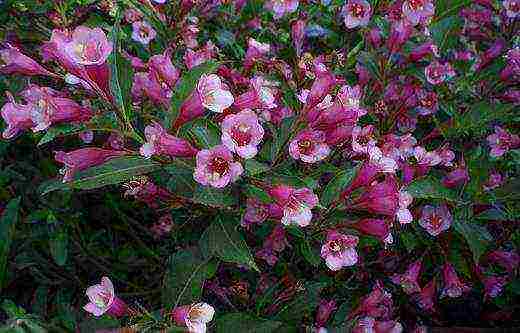
Weigela pink
hardy, color-loving variety;
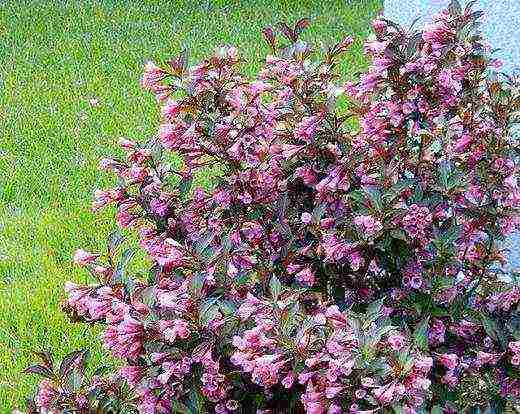
Weigela florida
the variety prefers moist acidified soil;
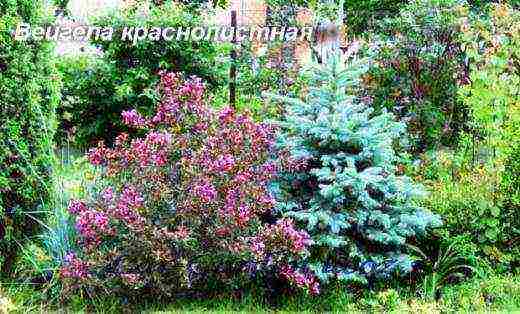
Weigela red-leaved
in addition to the bright color of the flowers, the leaves of the shrub also attract attention with their color;
-
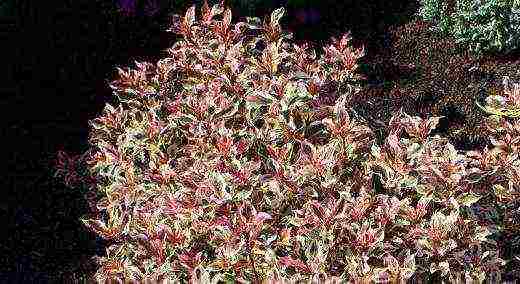
Weigela Coin
wedge-shaped foliage with a white border around the edge
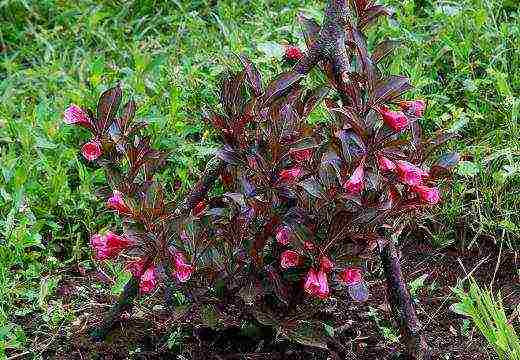
Weigela purple
bright moisture-loving shrub;
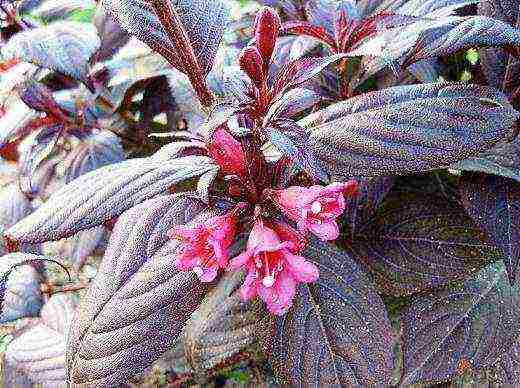
Weigela tango
small flowers of pinkish color from the outside and purple inside decorate the shrub during the entire flowering stage;

Weigela Victoria
the variety has large lilac flowers;
They are all similar to each other, but have some peculiarities for care and seating. Also, not all species are able to survive harsh winters or potted life prior to transplanting outdoors. More rare types of weigel, which, nevertheless, are demanded on the market and are also liked by buyers for their narrow distribution, are as follows:
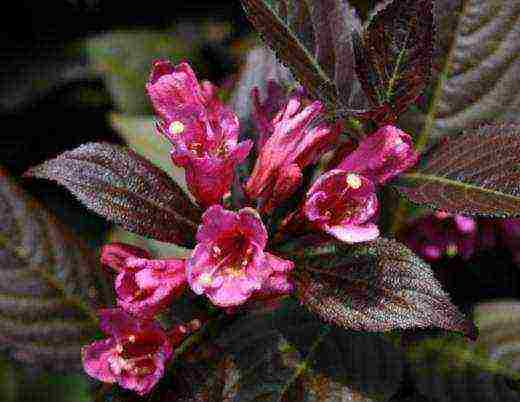
Weigela minor black
the variety has dark green leaves with red blotches;
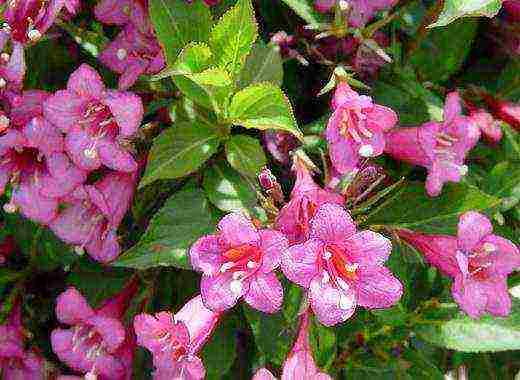
Weigela rumba
differs in small bright flowers of white-pink color;
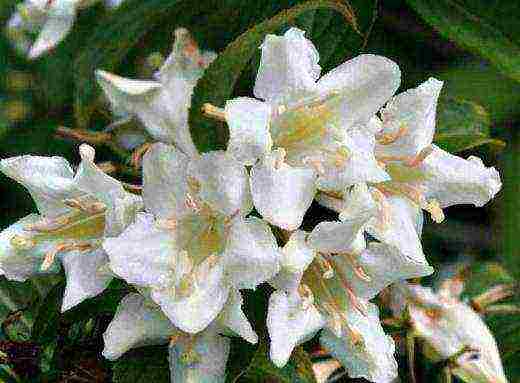
Weigela Candida
the variety is characterized by white large flowers;
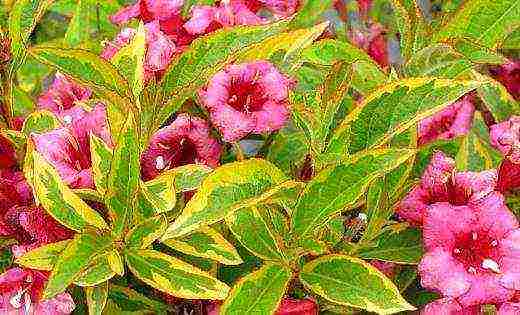
Weigela brighella
large shrub up to one and a half meters high;
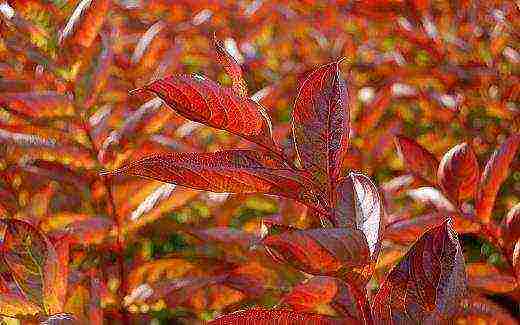
Weigela wings of fire
so named due to the reddish leaves;
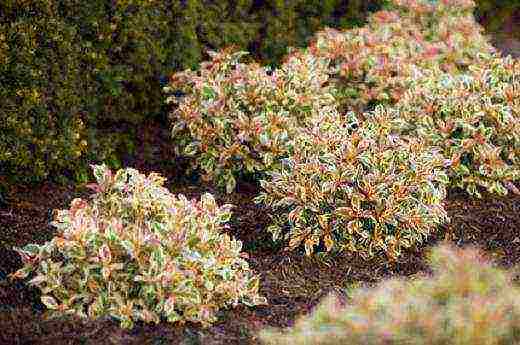
Weigela Monet
which shrub is more suitable for creating a background base in a garden composition;
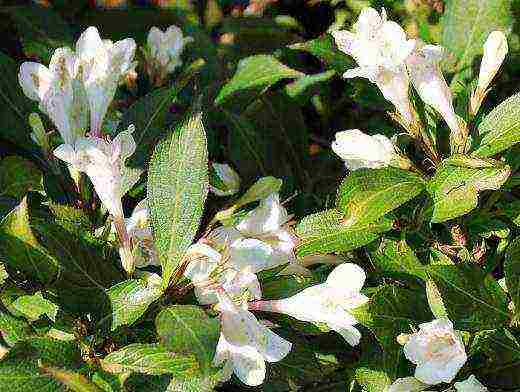
Weigela Black & White
the foliage of the bush has a dull white-green color;
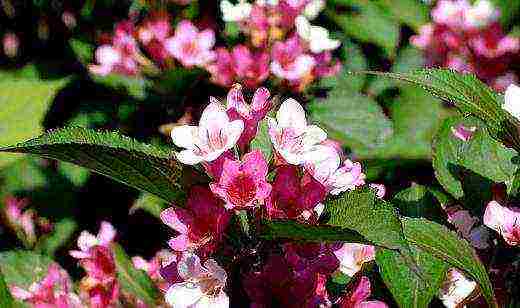
Weigela Korean
one of the most picky varieties.
You need to fertilize shrubs from early spring. The fertilizer should preferably contain potassium, nitrogen, phosphorus. In the second year, you can lower the fertilizer. Before planting shrubs in a pit, it is imperative to lay out this pit with expanded clay or broken red brick. What will serve as drainage. Weigela is sensitive to waterlogging, so watering should be careful and suitable for a certain variety of weigela. The photo of weigela in landscape design looks especially advantageous if it is planted with the correct overexposure of the distance between the bushes.
Photo of weigels in landscape design 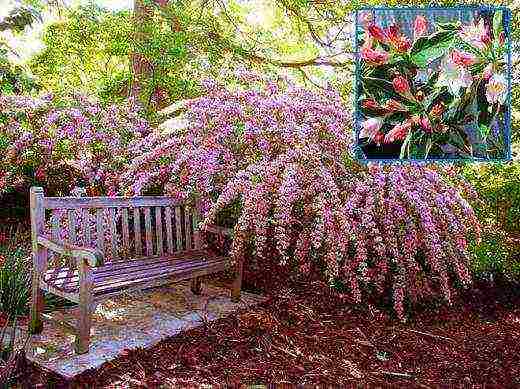
Weigela in the garden
Weigela is often used as an addition to garden compositions. It fits into any design project. It is good for her to decorate the flowerbed area and bring it into park landscape projects.
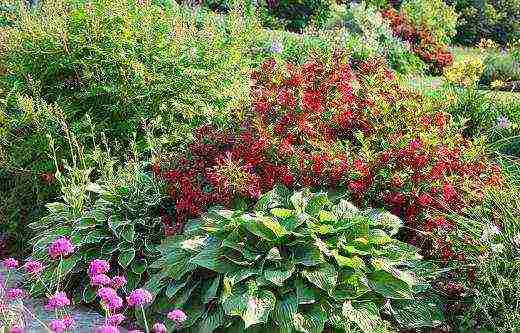
Weigela in flower bed decoration
Weigela seeds price
You can buy weigela seeds even for one hundred rubles.Bags of different varieties are not so expensive, so almost every gardener who has decided to somehow embellish his plot can afford them. Read about the characteristics of the tunberg barberry on this page.
Where to buy weigela?
You can buy weigela in Moscow here:
- Garden center "Vesna" Moscow, Kaluzhskoe highway, Krasnaya Pakhra settlement (24 km from MKAD, 2 km from Troitsk)
Contact phone: +7 (495) 772-63-02, +7 (495) 764-07-67 - Zelentorg company, Moscow, Skhodnensky blind alley, 20
Contact phone: +7 (495) 971-80-77 - Nursery of ornamental garden plants, Moscow, Dmitrovskoe shosse, 167
Contact phone: +7 (495) 968-32-62
You can buy weigela in St. Petersburg at:
- Garden center "Nature" Saint Petersburg, Pushkin, Kuzminskoe highway, garden of the Agrarian University.
Contact phone: 924-00-52 - Nursery complex "Villa-Planta" Leningrad region St. Petersburg, Lisiy Nos village, st. Hilly, 16 Contact phone: +7 911 232-76-80, +7 981 894-11-52
- Company "Giftway" St. Petersburg st. Danube pr. 34/16
Contact phone: +7 (981) 792-85-70, +7 (953) 150-16-37
Video
About how weigela blooms, watch the video clip below:
Any gardener wants his "creation" to please and give reason to admire, because he seeks to decorate the site with different garden plants. Weigela will be an excellent option not only for decorating the garden space, but also for the terrace and for places intended for relaxation. Read about the features of growing thuja smaragdas here:


